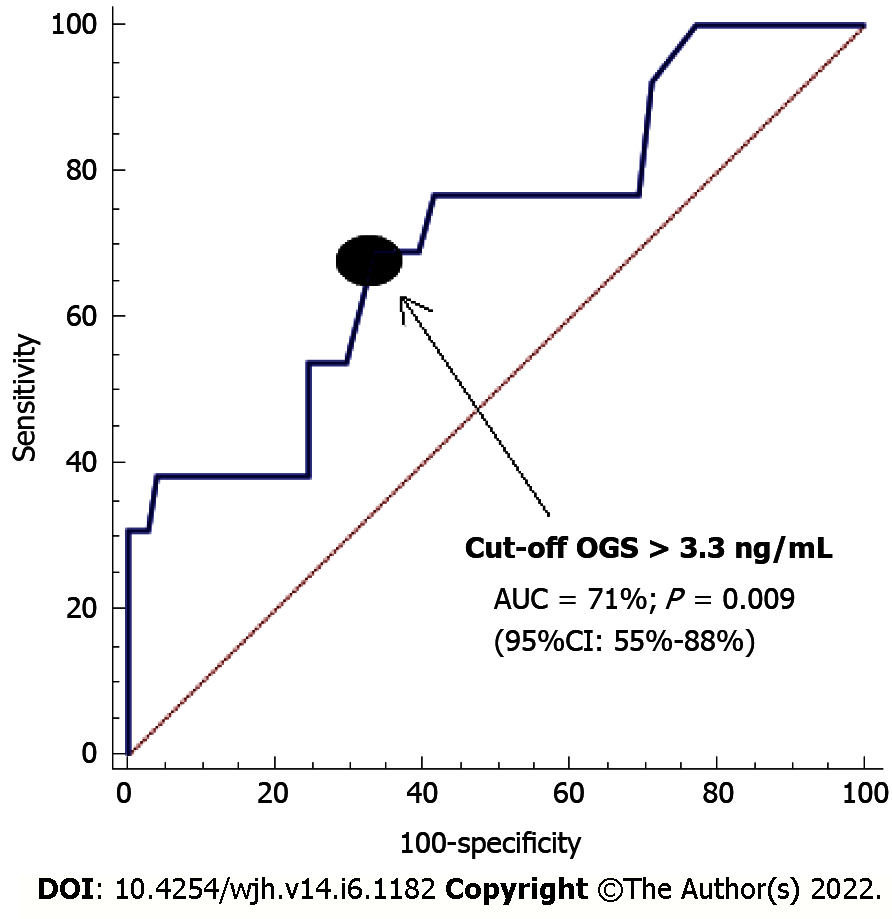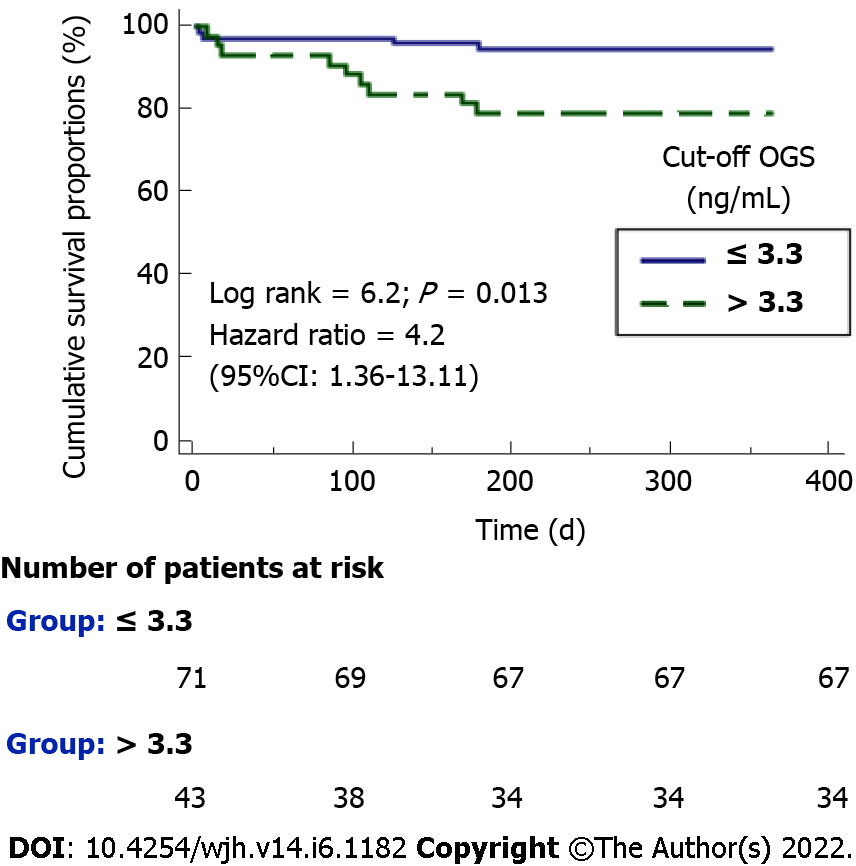Copyright
©The Author(s) 2022.
World J Hepatol. Jun 27, 2022; 14(6): 1182-1189
Published online Jun 27, 2022. doi: 10.4254/wjh.v14.i6.1182
Published online Jun 27, 2022. doi: 10.4254/wjh.v14.i6.1182
Figure 1 On the receiver operating characteristic analysis, the area under the curve of pre-liver transplantation serum oxidized guanine species concentrations for predicting 1-yr liver transplantation mortality was found to be 71% (95% confidence interval: 55%-88%; P = 0.
009). OGS: Oxidized guanine species; CI: Confidence interval; AUC: Area under the curve.
Figure 2 The Kaplan-Meier survival analysis showed a higher 1-yr liver transplantation mortality risk in patients with increased serum oxidized guanine species levels prior to liver transplantation (hazard ratio = 4.
2; 95% confidence interval: 1.36-13.11; P = 0.01). OGS: Oxidized guanine species; CI: Confidence interval.
- Citation: Lorente L, Rodriguez ST, Sanz P, González-Rivero AF, Pérez-Cejas A, Padilla J, Díaz D, González A, Martín MM, Jiménez A, Cerro P, Portero J, Barrera MA. DNA and RNA oxidative damage in hepatocellular carcinoma patients and mortality during the first year of liver transplantation. World J Hepatol 2022; 14(6): 1182-1189
- URL: https://www.wjgnet.com/1948-5182/full/v14/i6/1182.htm
- DOI: https://dx.doi.org/10.4254/wjh.v14.i6.1182










